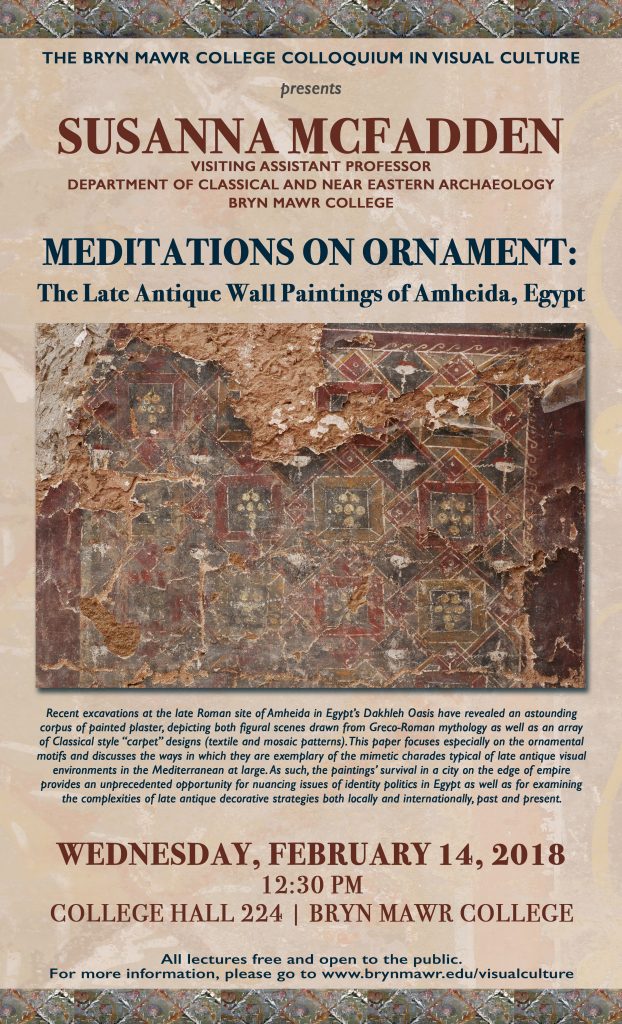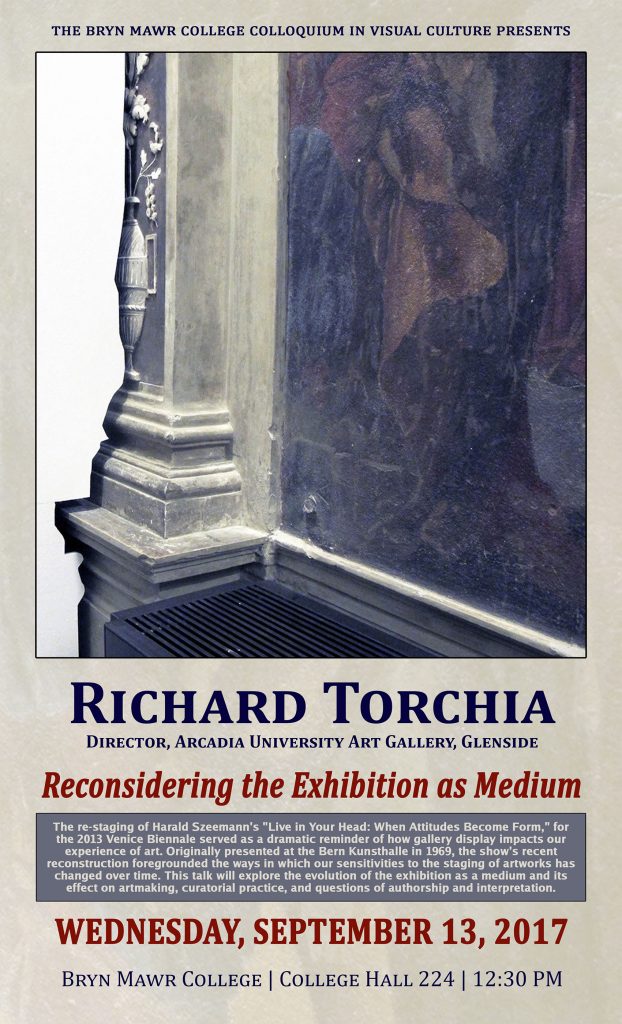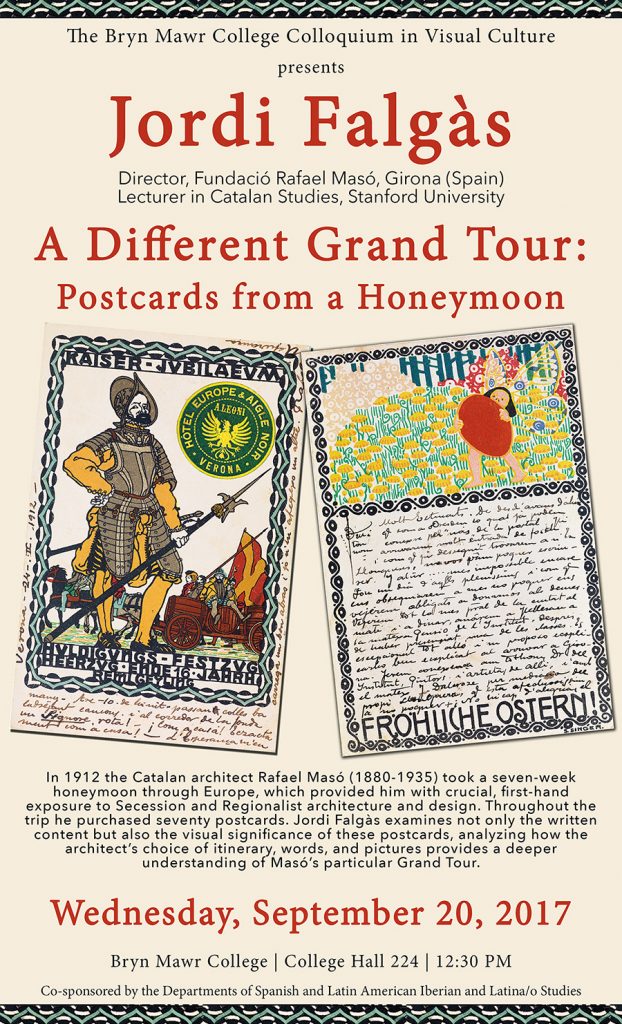Visiting Assistant Professor, Department of Classical and Near Eastern Archaeology, Bryn Mawr
“Meditations on Ornament: The Late Antique Wall Paintings of Amheida, Egypt”
Recent excavations at the late Roman site of Amheida in Egypt’s Dakhleh Oasis have revealed an astounding corpus of painted plaster, depicting both figural scenes drawn from Greco-Roman mythology as well as an array of Classical style “carpet” designs (textile and mosaic patterns). This paper focuses especially on the ornamental motifs and discusses the ways in which they are exemplary of the mimetic charades typical of late antique visual environments in the Mediterranean at large. As such, the paintings’ survival in a city on the edge of empire provides an unprecedented opportunity for nuancing issues of identity politics in Egypt as well as for examining the complexities of late antique decorative strategies both locally and internationally, past and present.









